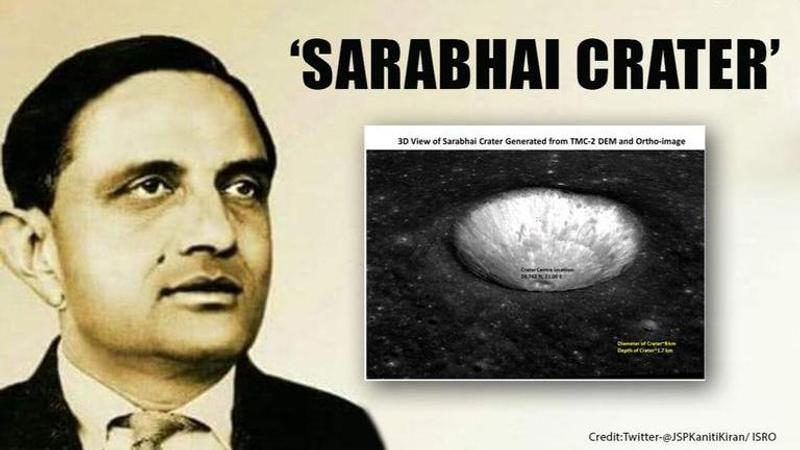Published 10:56 IST, August 15th 2020
ISRO shares image of moon crater captured by Chandrayaan-2, names it after Vikram Sarabhai
One of the craters on Moon captured by Chandrayaan-2 has been named after the father of Indian Space Program, Dr Vikram Ambalal Sarabhai as a tribute by ISRO.

To honour Dr Vikram Ambalal Sarabhai, the Father of the Indian Space Program, one of the craters in Moon captured by the Chandrayaan-2 has been named after him. On the completion of his birth centenary on August 12, Indian Space Research Organisation (ISRO) said in a statement that the crater on Mare Serenitatis in the northeast quadrant of the Moon has been named 'Sarabhai Crater' to pay tribute to the scientist.
Credits: ISRO
Indian astrophysicist Dr Vikram Ambalal Sarabhai is also the Founder of Physical Research Laboratory apart from being a renowned cosmic-ray and space scientist.
Minister of State in the Prime Minister's Office Jitendra Singh paid tributes to Vikram Sarabhai and said that this is a thanksgiving tribute to the scientist on his birth centenary. Singh, who is also the Minister of State for Department of Space, added that the recent achievements of ISRO is a vindication of Sarabhai's visionary dream.
The Sarabhai Crater is present on one of the lunar mare regions on Earth’s natural satellite. It has vast lava plains creating a nearly flat surface. Around 250-300 kilometres on the east of the Sarabhai crater is the landing site of Apollo 17 and Luna 21 missions.
Sarabhai crater is nearly 1.7km raised
The ISRO statement also said that the three-dimensional image of the crater was generated by the use of Fore, Nadir and Aft images captured by TMC-2. The depth of the Sarabhai crater is approximately 1.7 kilometres from the raised crater rim and the average slope of the walls is in the range of 25-30 degrees.
The outer region of the crater is dominated by several numerous smaller craters with varying diameters distributed over the flat Mare plains. But, the region is devoid of any other large crater with a diameter that is greater than 10 kilometres in the vicinity of around 100 kilometres.
ISRO statement said, “The raised rim, the gradient inner walls and the small hummocky floor makes the Sarabhai crater an excellent example to understand the impact processes on the lava filled region of the Moon.”
Updated 10:56 IST, August 15th 2020




